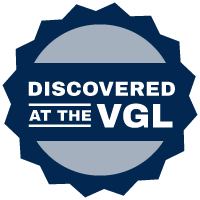Quick Summary

Click here for Price and Turnaround Time
Phenotype: Tiger eye is a dilute iris color characterized by a yellow, amber, or bright orange color.
Mode of Inheritance: Autosomal recessive
Alleles: N = Normal or not dilute, TE1 = Tiger eye 1 variant, TE2 = Tiger eye 2 variant
Breeds appropriate for testing: Puerto Rican Paso Fino
Explanation of Results:
- Horses with N/N genotype will not have tiger eye and cannot transmit a tiger eye variant to their offspring.
- Horses with N/TE1 or N/TE2 genotype will not have tiger eye, but are carriers. They may transmit a tiger eye variant to 50% of their offspring. Matings between two carriers of a tiger eye variant will result in a 25% chance of producing a foal with tiger eye.
- Horses with TE1/TE1, TE2/TE2, or TE1/TE2 genotype are expected to display a lighter eye color, and will transmit a tiger eye variant to all of their offspring.
Sample Collection
Horse DNA tests are carried out using cells from the roots of a hair sample (roughly 20-40 hairs).
1. Grab about 10 hairs at the base.
2. Wrap the hairs around your finger and give it a quick pull.
3. Check the ends to make sure the pulled hairs have roots.
4. Repeat the process until you have collected about 20-40 hairs with intact roots.
5. You can choose different places on the mane or tail. NOTE: For foals, we recommend pulling all hairs from the tail only.
6. Tape the hairs to the submission form and fold the form along the dotted line to protect the sample. Do not use ziploc bags as they can cause condensation that allows mold to grow on the hair.
7. Place the folded form containing the sample in a paper envelope and mail it to the laboratory.

Tiger eye is a dilute iris color found in Puerto Rican Paso Fino Horses. In contrast to the brown-colored eyes of most horses, “tiger eye” is characterized by a yellow, amber, or bright orange color. Researchers at the Veterinary Genetics Laboratory investigated the genetic basis of this phenotype and identified two variants in the gene SLC24A5 responsible for tiger eye, named Tiger eye 1 (TE1), in exon 2, and Tiger eye 2 (TE2), in exon 7. The tiger eye phenotype is inherited as a recessive trait. Horses with tiger eye are most frequently homozygous (two copies) for the TE1 variant (TE1/TE1). Some tiger eye horses are compound heterozygous (one copy each) for both variants (TE1/TE2). Horses with the genotype (TE2/TE2) are rare; the one documented case had a very light yellow/blue iris color. Brown-eyed horses can carry one copy of either TE1 or TE2 but they will also have one copy of the normal gene. Unlike the iris color dilution associated with the cream and champagne mutations, there does not appear to be a connection between tiger eye and dilute coat pigmentation. The tiger eye phenotype has been seen on all three non-dilute base coat colors (black, bay, and chestnut) and in both males and females. While to date TE1 and TE2 have only been detected in Puerto Rican Paso Finos, it is possible that these variants may explain lighter eye color in closely related breeds.
Testing for these tiger eye variants allows breeders to identify carriers of tiger eye. Since brown-eyed horses can carry either TE1 or TE2, owners breeding for or against this unique eye color can use this diagnostic tool to inform mating decisions.

 Tiger Eye
Tiger Eye